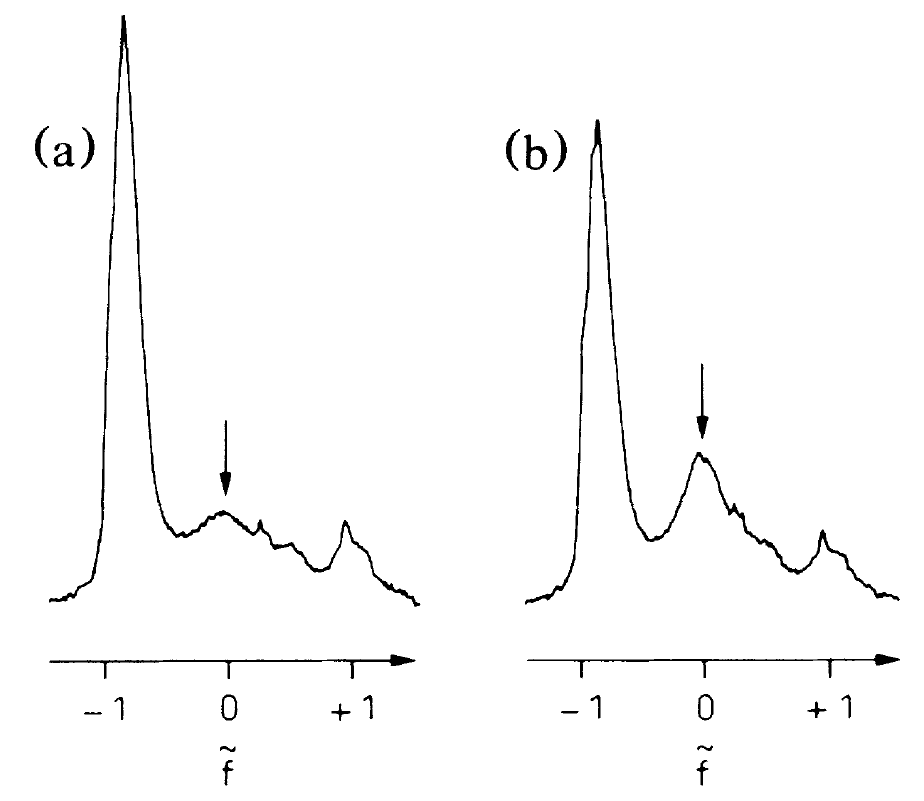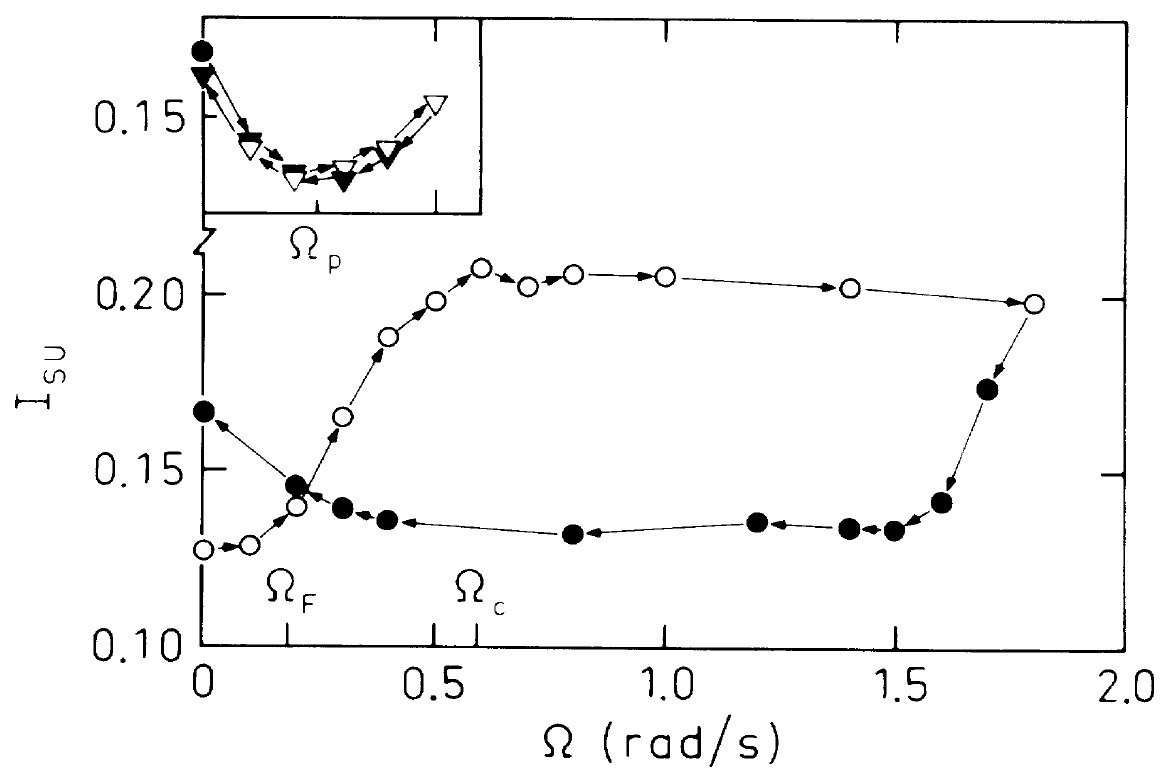

Order parameter
textures induced by external magnetic field and
superflow in narrow channels display intricate phenomena, including Freedericksz type
of transitions. By using
transverse cw NMR at 28.4 mT, we have made the
exciting observations of a localized spin-wave mode
trapped by the textural boundary layer in He-A. This
surface mode, similar to a spin wave trapped by a
pure l texture soliton,
has been studied theoretically by Bruinsma and Maki.
Our observations agree well with their calculations.
Furthermore, we find that this spin-wave mode, and
the interaction between the l
texture and the superflow, provide in He3-A a method
for studying the creation and pinning of vortices in
narrow gaps when the sample is rotated.
FIGURES (Top left) Measured NMR absorption spectra of He3-A as a function of scaled frequency in a stack of Mylar plates with average spacing of about 10 microns. The line shape (a) in the stationary state and (b) at an angular speed of 0.6 rad/s. The Ω-dependent spin wave resonance peak discovered in this work is indicated by arrows. The spectra were recorded at p =33 bars and at T = 0.73Tc. (Bottom left) Observed hysteresis in the relative NMR absorption of the surface spin-wave mode (SU) vs the angular velocity of the cryostat; open circles and filled circles refer to acceleration and deceleration, respectively. When the speed was varied between 0 and 0.5 rad/s after the hysteresis loop had been traversed, the reversible branch with a clear minimum was obtained as shown in the inset (open and filled triangles). The measuring time at each successive speed was 4 min.
FIGURES (Top left) Measured NMR absorption spectra of He3-A as a function of scaled frequency in a stack of Mylar plates with average spacing of about 10 microns. The line shape (a) in the stationary state and (b) at an angular speed of 0.6 rad/s. The Ω-dependent spin wave resonance peak discovered in this work is indicated by arrows. The spectra were recorded at p =33 bars and at T = 0.73Tc. (Bottom left) Observed hysteresis in the relative NMR absorption of the surface spin-wave mode (SU) vs the angular velocity of the cryostat; open circles and filled circles refer to acceleration and deceleration, respectively. When the speed was varied between 0 and 0.5 rad/s after the hysteresis loop had been traversed, the reversible branch with a clear minimum was obtained as shown in the inset (open and filled triangles). The measuring time at each successive speed was 4 min.